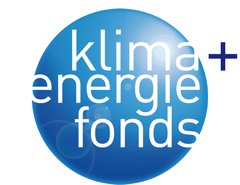
Work Package 5: Identifying transition options and their economic implications up to 2050
The economic layer (Tier 2)
A functionality can be served by a multitude of different technologies (characterized by different degrees of resource productivity), which determines economic activities. The economic analysis allows comparing the resources required to serve functionalities, and thus identify the most resource-efficient pathways. In economic terms this translates into different investment and operating costs as well as different sectoral demand structures.
For the economic evaluation of functionalities the interaction of stocks and flows is crucial (see above for a broader discussion on the importance of stock and flow interaction). We thus suggest applying the concept of user costs, since it captures both stock related costs (i.e. capital costs) as well as costs attributed to flows (i.e. operating costs). Annual user costs are the sum of annualized capital costs and annual operating costs and (at least should be) an important determinant for individual decision making. Hence for each functionality new (high-potential) technologies or fundamental behavioural change need to be identified and respective cost information needs to be gathered. The possible shifts from the set of currently used technologies (and the associated costs) to a set of new (breakthrough) technologies or behavioural patterns describe available transition processes. Both technologies and behavioural patterns affect economic structures.
The aggregate level is the second crucial one to be in the focus of analysis and consideration. In economic terms it is the macroeconomic perspective (i.e. capturing the macroeconomic effects of the transition) that is at the core of our interest at this level. Macroeconomic effects emerge via the interlinkages across different economic sectors and agents. For example, if there is increased demand for construction activities for the thermal improvement of the building stock, this generates increased demand for labour and other intermediate inputs in sectors that provide products which are needed for construction activities (e.g. insulation material, transport etc…). Also foreign trade may be affected by the transition if import intensities of products and technologies for transition options differ from those of conventional technology options. For example, if insulation material for buildings is over(under)proportionally imported, the foreign trade balance worsens (improves). Any acceleration of the diffusion of transition technologies is reflected in stronger macroeconomic effects. The macroeconomic evaluation needs to reveal the interrelationships between all economic sectors – and how these change through transition processes - within a macroeconomic consistent framework.
The institutional layer of a deepened structural modelling approach (Tier 3)
Compared to traditional modelling approaches ClimTrans2050 proposes an extended mindset for modelling that integrates the institutional layer more explicitly into the overall framework. The institutional layer in its comprehensive understanding determines the framing in which socio-economic activities take place, and thus shapes what form they take as well as it determines their GHG emissions. In the context of the functionality approach it ultimately co-determines the level of functionalities and which combinations of stocks and flows are chosen for satisfying them. The institutional layer is an enabling factor for functionalities and for transformation processes. In order to highlight the relevance of the different aspects of the institutional layer and particularly emphasizing the role of non-price mechanisms ClimTrans2050 proposes a separate tier to address the institutional setting. The rationale for this is to augment transparency with respect to instruments and mechanisms in modelling.
Giving special emphasis to the role and potentials of different institutions by deliberately distinguishing between the three tiers is one of the cornerstones of the ClimTrans2050 Research Plan. In a nutshell this approach has the following merits:
- It encourages broadening the scope of institutional elements and new practices in modelling.
- It puts special emphasis on non-market mechanisms.
- It increases the transparency of the impact of different institutional elements on the transition process towards a low carbon economy.
- The ClimTrans2050 modelling framework links the physical layer (Tier 1) and the economic layer (Tier 2) to the institutional layer (Tier 3).
Institutional elements that are of high relevance in the context of long run decarbonisation processes comprise heterogeneous elements that encompass both market based and non-market based instruments and mechanisms:
- Lifestyles: Lifestyles are reflected in consumption patterns that relate to certain production structures and ultimately greenhouse gas emissions. Although research (e.g. IPCC, 2014) points at the crucial role of lifestyles for climate change mitigation, they are often not explicitly addressed in modelling.
- Social dimension: The social dimension includes e.g. the labour market design, distributional aspects, or education. These aspects are already taken up in different level of detail and different way in existing models. Knowledge already available can serve as input for model modules in the deepened structural modelling approach.
- Non-market based instruments: This group of instruments comprises command-and-control instruments like standards. Usually these instruments are not the main focus in traditional economic modelling approaches that typically put a stronger emphasis on changes in relative prices. This category of instruments, however, may exert considerable changes in economic activity and economic structures.
- Market based instruments: They are represented broadly in existing economic models and are e.g. modelled as taxes, permits, or subsidies. Typically the effect of market based instruments is modelled as causality between price changes and changes in production and consumption patterns. Interlinkages with other regulations e.g. standards is in this context frequently concealed. Explicitly addressing the institutional layer facilitates to focus on these aspects.
- Public and private finance: The public sector is of high relevance and has a large potential with respect to changing capital stocks and infrastructure. Hence, for low carbon transition modelling it needs to be addressed in sufficient detail; e.g. with respect to the tax structure or public investment. For user costs, as emphasised in the ClimTrans2050 Research Plan, aspects of private finance like amortisation periods need to gain in importance in modelling. This concept is standard for investment decisions, but not firmly integrated in macroeconomic models.
- Market mechanisms: They represent the role of markets for economic activities.




